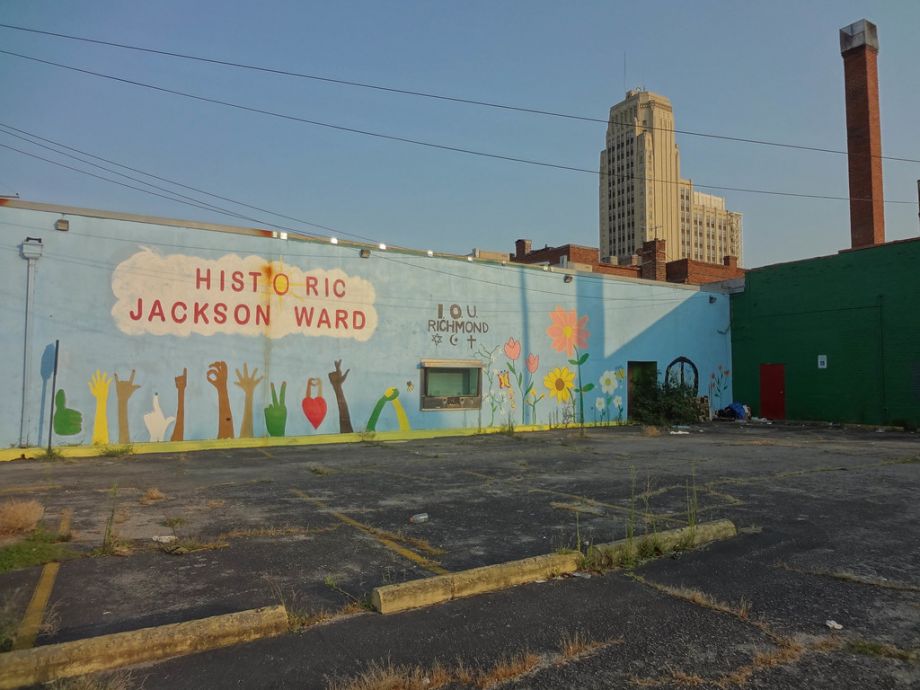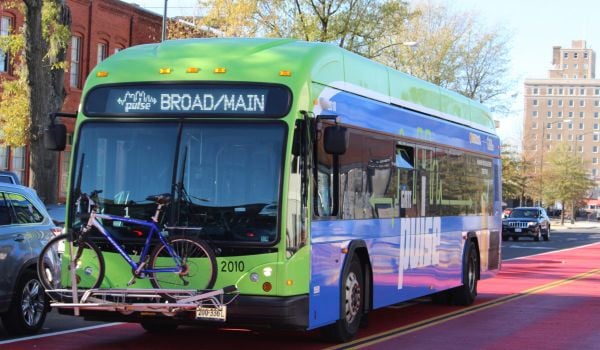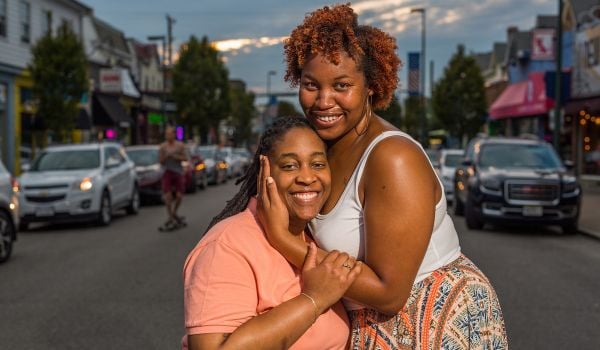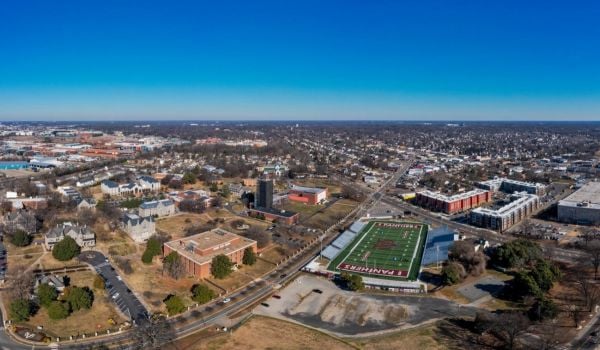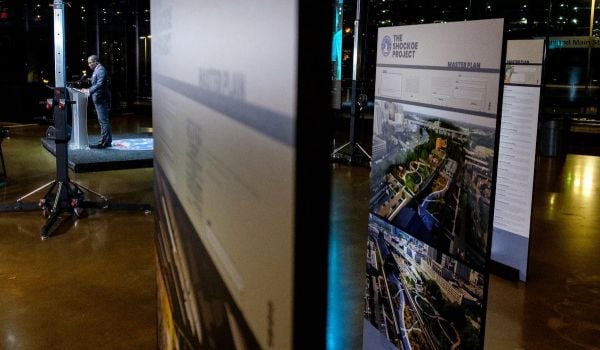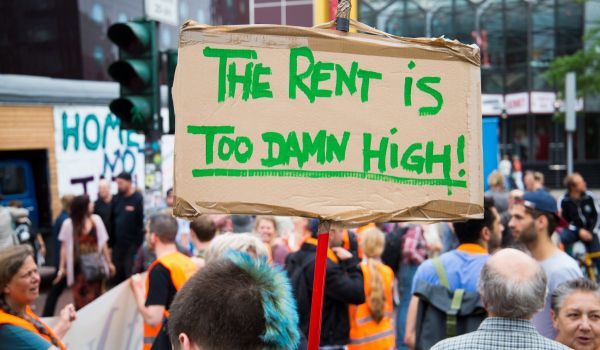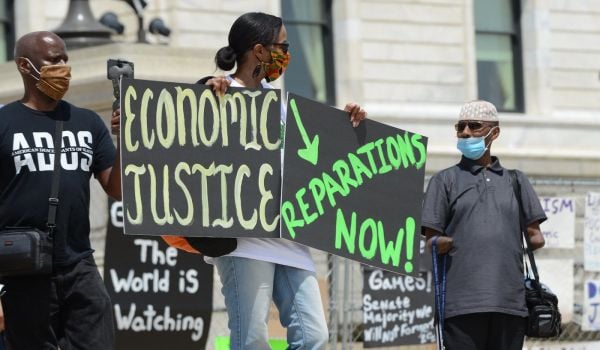This article was originally published on Greater Greater Washington.
Fifty-four years ago, Virginia’s capital city broke ground on a new 13,500 seat arena, but the Richmond Coliseum was no greenfield development. The now defunct stadium resides on what was once the historically Black neighborhood of Navy Hill in east Jackson Ward. With redevelopment plans for the 9.4 acre downtown tract in the works, could the families displaced by the Coliseum’s construction finally receive reparations?
Ripe for redevelopment
Ask a Richmonder what “Navy Hill” is and odds are you won’t hear about the historic neighborhood first settled by Germans and later reinvigorated by Black residents. In 2017, now deceased Dominion Energy CEO Tom Farrell used the name as branding for a multi-billion dollar downtown redevelopment proposal. Though City Council ultimately shot down the Navy Hill deal, Mayor Levar Stoney shuttered the arena in 2019 amidst a push for the plan.
To pave the way for a new redevelopment deal, the Coliseum, Blues Armory, 6th Street Marketplace, and a coterie of other downtown parcels have been passed off to the Richmond Economic Development Authority (EDA). Although a cooperation agreement allows city personnel to staff the EDA’s redevelopment work, the final plans won’t come before City Council but rather will be approved by the EDA directly.
The three requirements listed in the City Center request for interest released last year include the demolition of the Coliseum, a minimum 500-room hotel to serve the Convention Center, and a public green space in which the City could host festivals, concerts, and even an ice skating rink.
“The Convention center is a partner and sits on the EDA’s evaluation panel because they want a hotel that has at least 500 if not 1,000 rooms,” explains Maritza Pechin, the deputy director of the Office of Equitable Development. “The Convention Center is only 40% occupied even in good years because there are not enough hotels in town.”
The 8% hotel tax has never even covered the cost of the bonds taken out in the 1980s to build the Convention Center, according to Pechin, so the city has had to pay down the debt using money out of Richmond’s meager general fund for nearly four decades.
Beyond the specific hotel wishes, the EDA has “no target number for housing units” to be included in the City Center redevelopment plans, Pechin explains. However, 10% of the units constructed will be set aside for Gilpin Court residents as that public housing complex is targeted for redevelopment in the next two to three years.
While the EDA hopes to have a preferred developer selected this spring and a deal sealed by June 21 at the latest, some Richmonders have another idea for what to do with Navy Hill’s 9.4 acres.
There are Black Richmonders today who remember exactly where their home and/or business used to be within this space prior to being purposefully destroyed during the 1950s. The City Center plan would be perpetuating a legacy of displacement & erasure.https://t.co/uxCSrwdvBI
— LaToya Gray-Sparks (@latoyasgray) December 6, 2022
Ripe for reparations
While everyone in town was talking about the multi-billion dollar Navy Hill real estate deal, LaToya Gray-Sparks couldn’t help but wonder about the people who had initially lived on that land. As a Virginia Commonwealth University graduate student earning her master’s in urban and regional planning, she turned her research skills toward local archives and found a map of 2,100 people and places that had existed in this part of east Jackson Ward before the construction of Interstate 95 and urban renewal projects like the Coliseum evicted them.
“Many of these displaced people are still living in the city today and can remember exactly where their homes and businesses were,” says Gray-Sparks, a board member of the Partnership for Smarter Growth. “There is this huge opportunity for us to address this injustice head on. Other places are doing that and our planners here in Richmond should be doing this as well.”
Although the former capital of the Confederacy has gotten better at talking about its dark history of slavery and segregation in recent years, few folks speak of the racist seizure of homes, businesses, land, and livelihoods in the name of “urban renewal” roughly a half century ago. Raised/Razed, a documentary on the destruction of Black neighborhoods, highlighted a similar legacy of dispossession and displacement in Charlottesville last year.
For Gray-Sparks, her exploration of Richmond’s relatively recent history of displacement is not just another step in her academic advancement, it’s personal.
“I’ve had relatives who were displaced not once but twice because their neighborhoods were targeted for redevelopment or urban renewal,” she says. “Other people remember where their homes were, and today it’s a vacant parking lot owned by Virginia Commonwealth University. Black people in this city were asked to sacrifice and had so much taken from them in property and the ability to accumulate generational wealth.”
If Richmond were to pursue reparations for those dispossessed and displaced by urban renewal, it would join an ever lengthening list of cities (and even the state of California) looking to right the wrongs of the past. Even the City of Portsmouth in Hampton Roads is working to return publicly owned parcels to the families that had their homes and land seized by local officials beginning in the 1960s. Forced land acquisitions there continued as late as the 2000s.
Although government programs no longer force the displacement of Richmond’s Black residents (depending on one’s view of public housing redevelopment), high housing costs are still contributing to Virginia’s capital quickly becoming whiter. Over the last decade, Richmond’s population increased 10%, but that growth was not equally shared. The share of Black Richmonders shrank 11.5% while non-Hispanic whites rose 19%, causing the city to dip below a 50% share of Black residents for the first time in half a century.
Much of the city’s demographic changes can be traced back to the foreclosure crisis a little more than a decade ago and historic patterns of displacement. Given Black Richmonders’ legacy of dispossession and precarious place in its future, Sparks-Gray believes the community — and especially those who had their land seized by the City — are owed a seat at the table.
“A lot of these stolen parcels the City has owned, mismanaged, and not done a lot with since they took the land,” she says. “The development plans never even lived up to the promises that these homes and businesses were taken for. These people need to be compensated for all that they lost. Giving the land back is one of the most just things that could be done.”

Wyatt Gordon is a born-and-raised Richmonder with a master’s in urban planning from the University of Hawai‘i at Mānoa and a bachelor’s in international political economy from the American University in Washington, D.C. He currently covers transportation, housing, and land use for the Virginia Mercury. He also works as a policy and campaigns manager for land use and transportation at the Virginia Conservation Network. Wyatt is a proud Northsider you can find walking, biking, and taking the bus all over town.

